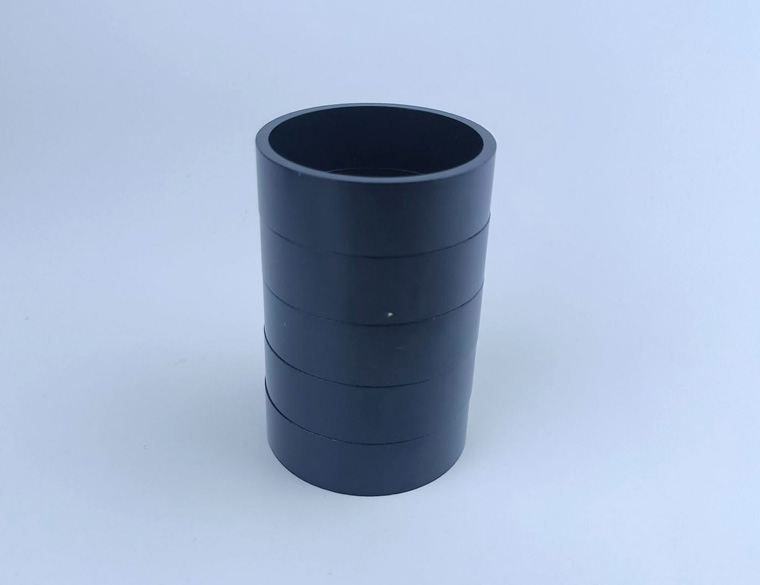Bonded magnet materials are magnets that are molded by mixing magnetic powder with a binder, this type of magnet is widely used in several industries due to its unique manufacturing process and performance characteristics, here is a summary of some frequently asked questions about bonded magnet materials.
1、What are the material types of bonded magnets?
At present, the market mainly uses bonded neodymium iron boron magnets, bonded ferrite magnets, bonded samarium cobalt.
2、Why do bonded magnets have lower magnetic properties?
Bonded magnets are made from a mixture of magnetic powder and binder. The magnetic powder content is low and dispersed, so their magnetic properties are usually lower than those of conventional sintered magnets.
3、What are the manufacturing processes for bonded magnet materials?
Molding, injection molding, extrusion molding, and calendering, with the first 2 mainly used.
Below is a bonded neodymium magnet ring with black epoxy coating.

4、Can bonded NdFeB replace ceramic magnets when higher performance is required?
Bonded Nd-Fe-B materials produce nearly twice the magnetic flux density of anisotropic ceramic magnets (Class 5 - 8), so replacing bonded Nd-Fe-B materials is a reasonably safe method of extracting higher performance from devices. Bonded Nd-Fe-B materials are also twice as resistant to demagnetization as ceramics, so Bonded Nd-Fe-B components can be half the thickness of ceramic magnets without loss of performance. If possible, steel parts mounting Bonded Nd-Fe-B magnets should be doubled in thickness to effectively carry the additional magnetic flux.
5、What are the directions of magnetization of bonded magnet materials?
Normal axial or radial magnetization. Multi-pole ID or OD magnetization, also at oblique angles.
6、What is the minimum thickness that a bonded magnet can be pressed to?
Around 2mm.
7、How much wall thickness can be achieved on one side of a bonded magnet ring?
Around 0.5mm.
8、Why are injection molded magnets less magnetic than compression molded magnets?
Compression molded magnets contain more magnet material than injection molded magnets, so they are inherently stronger. Molded magnets are made from a mixture of highly concentrated magnet powder and a small amount of epoxy resin as a binder. The mixture is then compressed to a high density before curing the epoxy. Injection molded magnets are made by mixing the powder with enough liquid plastic to be injected into the mold and at a lower pressure, so the injection molded part has a much lower concentration of powder and is therefore weaker.
9、What is the durability of bonded magnets?
The durability of bonded magnets depends on a number of factors such as the environment in which they are used (temperature, humidity, corrosiveness), mechanical stresses and impacts. Under normal conditions, bonded magnets can maintain stable performance for many years.
10、What are the disadvantages of bonded magnets?
Lower magnetic properties, narrower operating temperature range, compressive and flexural strengths are usually lower than sintered magnets, and certain molding methods may limit the maximum size that can be manufactured.
Bonded magnets product section;
Bonded injection molded ferrite magnets
Other bonded magnets are introduced;
Is bonded NdFeB a composite material?
 China Neodymium And Ferrite Magnets Manufacturer & Supplier
China Neodymium And Ferrite Magnets Manufacturer & Supplier 


